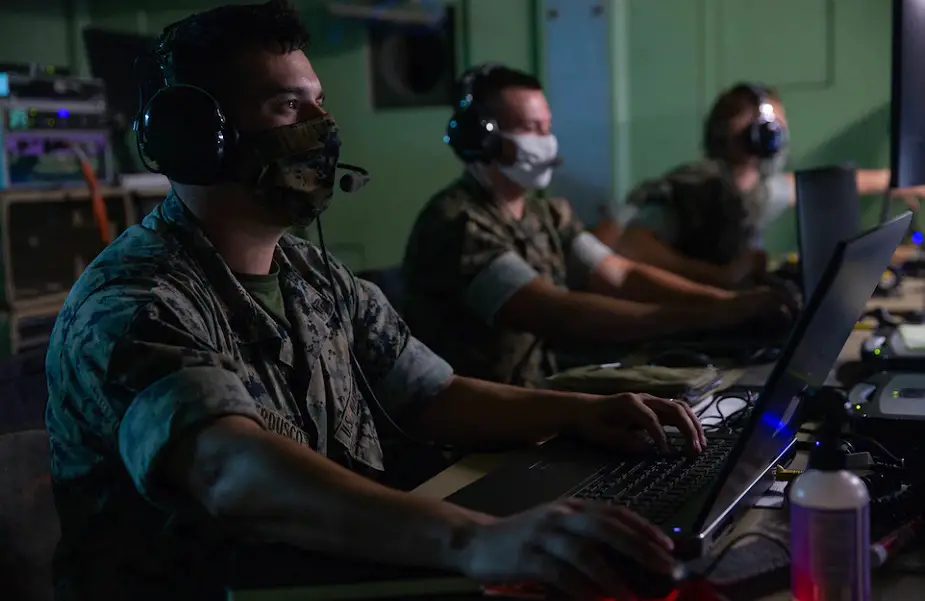Before the dawn of online gaming, video games and computer games primarily featured two to four players sitting in the same room looking at the same screen while using a controller or keyboard to play a game where they either raced or battled with or against each other. Games such as Mario Kart, Goldeneye and Super Smash Brothers provided hours of entertainment and camaraderie for gamers as they competed with and against their friends and family. When online gaming came into prominence in the early 2000s, it allowed gamers to play with friends, and mostly complete strangers, from anywhere across the globe. Today, the multi-billion dollar industry connects more than 2 billion gamers across a broad spectrum of different types of games such as strategy, first person shooter, and role playing games. U.S. Marine Corps pilots stationed in Cherry Point, North Carolina have taken a piece of the concept of online gaming and used it to enhance their training.
Follow Air Recognition on Google News at this link
 Marines and pilots at Twentynine Palms or El Centro, California, can conduct a large scale virtual exercise that mimics a service level training exercise without leaving the home station (Picture source: US Marine Corps)
Marines and pilots at Twentynine Palms or El Centro, California, can conduct a large scale virtual exercise that mimics a service level training exercise without leaving the home station (Picture source: US Marine Corps)
“COPE JAVELIN,” which took place last month, was a simulation that followed a fictional operational scenario that could easily take place in the real world. Marine aviators from various unites across 2nd Marine Aircraft Wing strapped into flight simulators for different aircraft that were located at different bases across eastern North Carolina. They were able to connect across different simulation systems and work together to defend against a fictional enemy force. They communicated with each other and integrated forces in order to accomplish a mission without ever getting into the cockpit of a real aircraft. This integration of multiple simulation systems gives Marine pilots and Marine Air Control Group 28 Marines the opportunity to accomplish hard, realistic training without leaving their respective bases and saves a tremendous amount of money in fuel, ordnance, maintenance and various other costs associated with conducting this training in real time.
The brains of this innovative and unique training is Lt. Col. Eric Grunke, the director of aviation training systems for 2nd MAW. He saw the need to integrate all Marine Air-Ground Task Force assets in a virtual training environment in order to improve aviation combat training.
“Linking [systems] is not new, but we are taking it to a new level by incorporating [command and control Marines] training on their own equipment, and we are using a common scenario developed by the Training Support Center – normally a ground-centric agency.”
Prior to this integration, the command and control Marines of MACG-28 who would be located in the Direct Air Support Center and the Tactical Air Operations Center would run separate simulations with simulated pilots and aircraft. Conversely, when a pilot is conducting simulator training, he or she would normally be speaking to a single pilot who would be acting as both the DASC and TAOC. While that training is effective, COPE JAVELIN provides additional opportunities to have key roles within the command and control structures manned by Marines who have the requisite skills to act in those specific billets. Normally, two to three integrated systems allow the pilots training in the simulator to conduct realistic communications, albeit with a makeshift TAOC or DASC outside of the simulator. Now, they can integrate more than ten simulators that bring together integral parts of the MAW, further allowing the MAW to be more effective in providing the six functions of Marine aviation.
Capt. Tony Megliorino, the lead planner of COPE JAVELIN for MACG-28, described his thoughts when he first heard the idea behind COPE JAVELIN. “The idea of being able to connect our simulator and simulation systems across the MAW for mutually beneficial training and readiness gains would be a tremendous capability."
“Both the DASC and TAOC have independent internal methods of training to accomplish their various training and readiness requirements. However, collectively, the [Marine Air Command and Control System] trains together during quarterly [MACCS Integrated Simulated Training Exercises] that exercise the MACCS agencies’ ability to function in various tactical scenarios.”
The initial testing of this capability didn’t come without its challenges. There were communications and a connectivity issues, which were expected with so many systems integrating for the first time. While issues are to be expected, the potential this capability brings is still very apparent. Capt. Megliorino describes the potential, “COPE JAVELIN will ideally lay the foundation for the MAW to utilize both simulated and virtual training methods to increase overall combat readiness.”
Marines and pilots at Twentynine Palms or El Centro, California, can conduct a large scale virtual exercise that mimics a service level training exercise without leaving the home station. Lt. Col. Grunke states, “The aim is not to replace live-fly events for units, but to enhance their performance by demonstrating the capability [all six aviation functions] in a virtual environment first. Additionally, the goal is [to] eventually train in [overseas] areas, at locations of possible Wing employment, not just U.S. training areas.”
In June, 2nd MAW will execute a more robust iteration of COPE JAVELIN expected to fill some of the gaps identified during this most recent ‘walk phase’ iteration of the exercise.
















